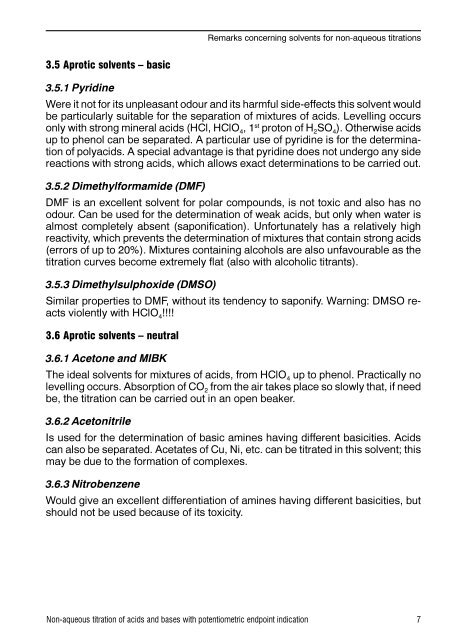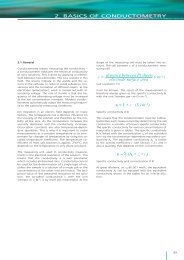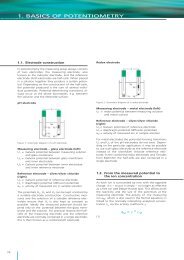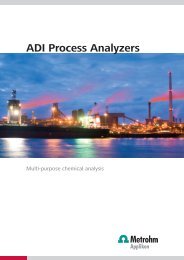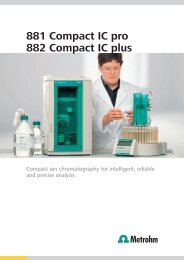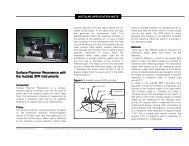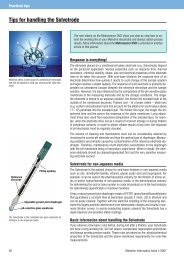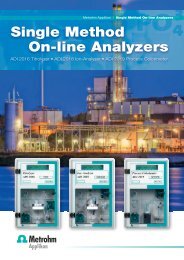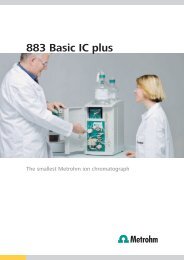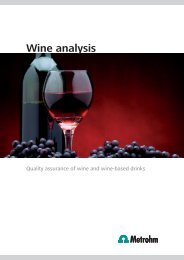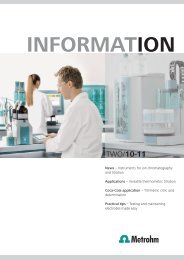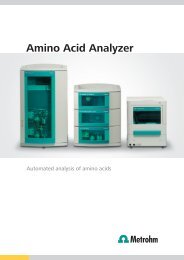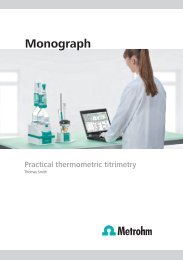Monograph - Metrohm
Monograph - Metrohm
Monograph - Metrohm
Create successful ePaper yourself
Turn your PDF publications into a flip-book with our unique Google optimized e-Paper software.
Remarks concerning solvents for non-aqueous titrations3.5 Aprotic solvents – basic3.5.1 PyridineWere it not for its unpleasant odour and its harmful side-effects this solvent wouldbe particularly suitable for the separation of mixtures of acids. Levelling occursonly with strong mineral acids (HCl, HClO 4 , 1 st proton of H 2 SO 4 ). Otherwise acidsup to phenol can be separated. A particular use of pyridine is for the determinationof polyacids. A special advantage is that pyridine does not undergo any sidereactions with strong acids, which allows exact determinations to be carried out.3.5.2 Dimethylformamide (DMF)DMF is an excellent solvent for polar compounds, is not toxic and also has noodour. Can be used for the determination of weak acids, but only when water isalmost completely absent (saponification). Unfortunately has a relatively highreactivity, which prevents the determination of mixtures that contain strong acids(errors of up to 20%). Mixtures containing alcohols are also unfavourable as thetitration curves become extremely flat (also with alcoholic titrants).3.5.3 Dimethylsulphoxide (DMSO)Similar properties to DMF, without its tendency to saponify. Warning: DMSO reactsviolently with HClO 4 !!!!3.6 Aprotic solvents – neutral3.6.1 Acetone and MIBKThe ideal solvents for mixtures of acids, from HClO 4 up to phenol. Practically nolevelling occurs. Absorption of CO 2 from the air takes place so slowly that, if needbe, the titration can be carried out in an open beaker.3.6.2 AcetonitrileIs used for the determination of basic amines having different basicities. Acidscan also be separated. Acetates of Cu, Ni, etc. can be titrated in this solvent; thismay be due to the formation of complexes.3.6.3 NitrobenzeneWould give an excellent differentiation of amines having different basicities, butshould not be used because of its toxicity.Non-aqueous titration of acids and bases with potentiometric endpoint indication 7


